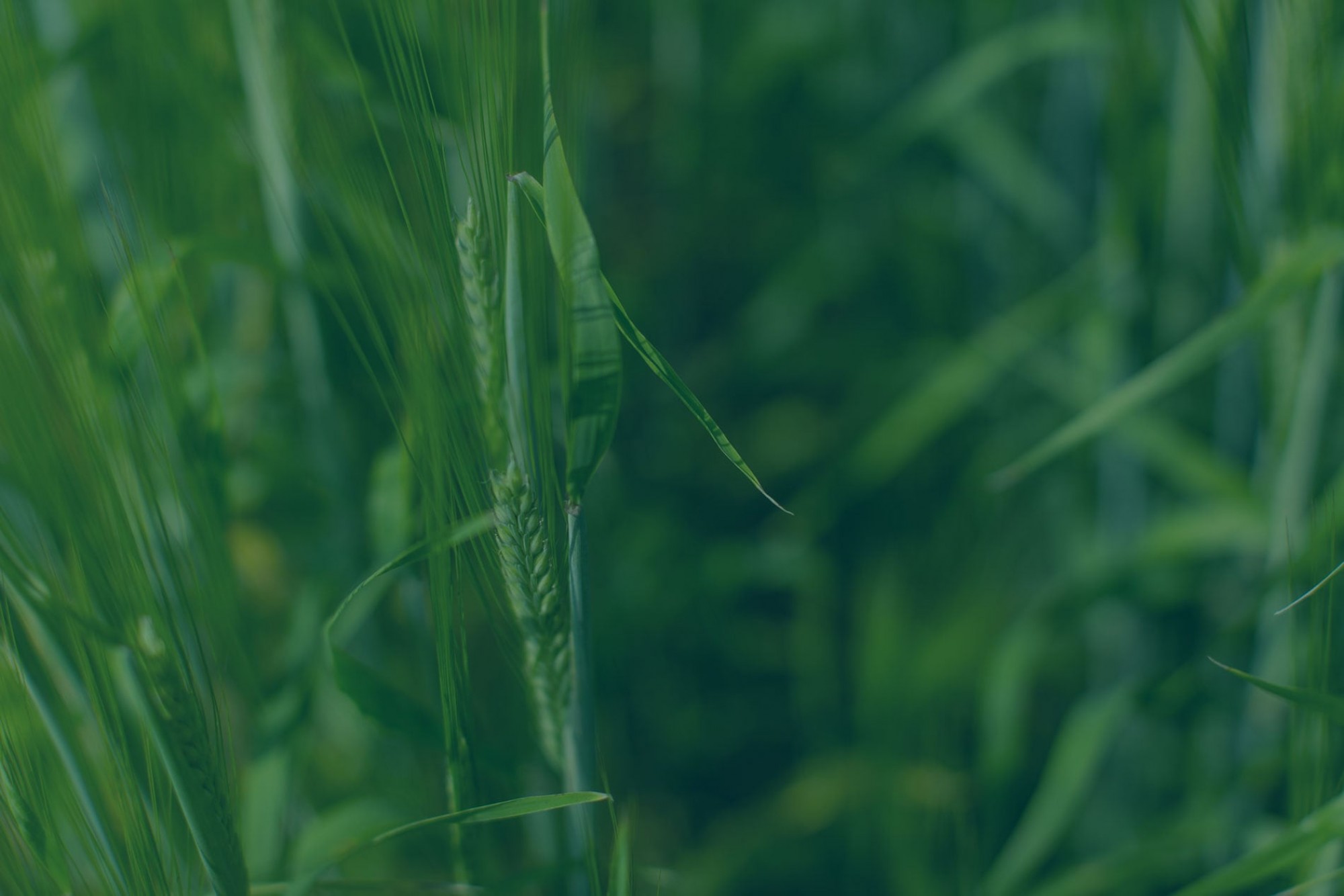Cereal insect pests to keep an eye on in 2024
Expertise provided by Shelley Barkley and Scott Meers
2023 saw some significant grasshopper and wheat stem sawfly damage in Alberta. As the 2024 season rolls in, what is the outlook for the cereal insect pests? Which insect pests need special attention? We will take a closer look with the entomologists.
Grasshoppers
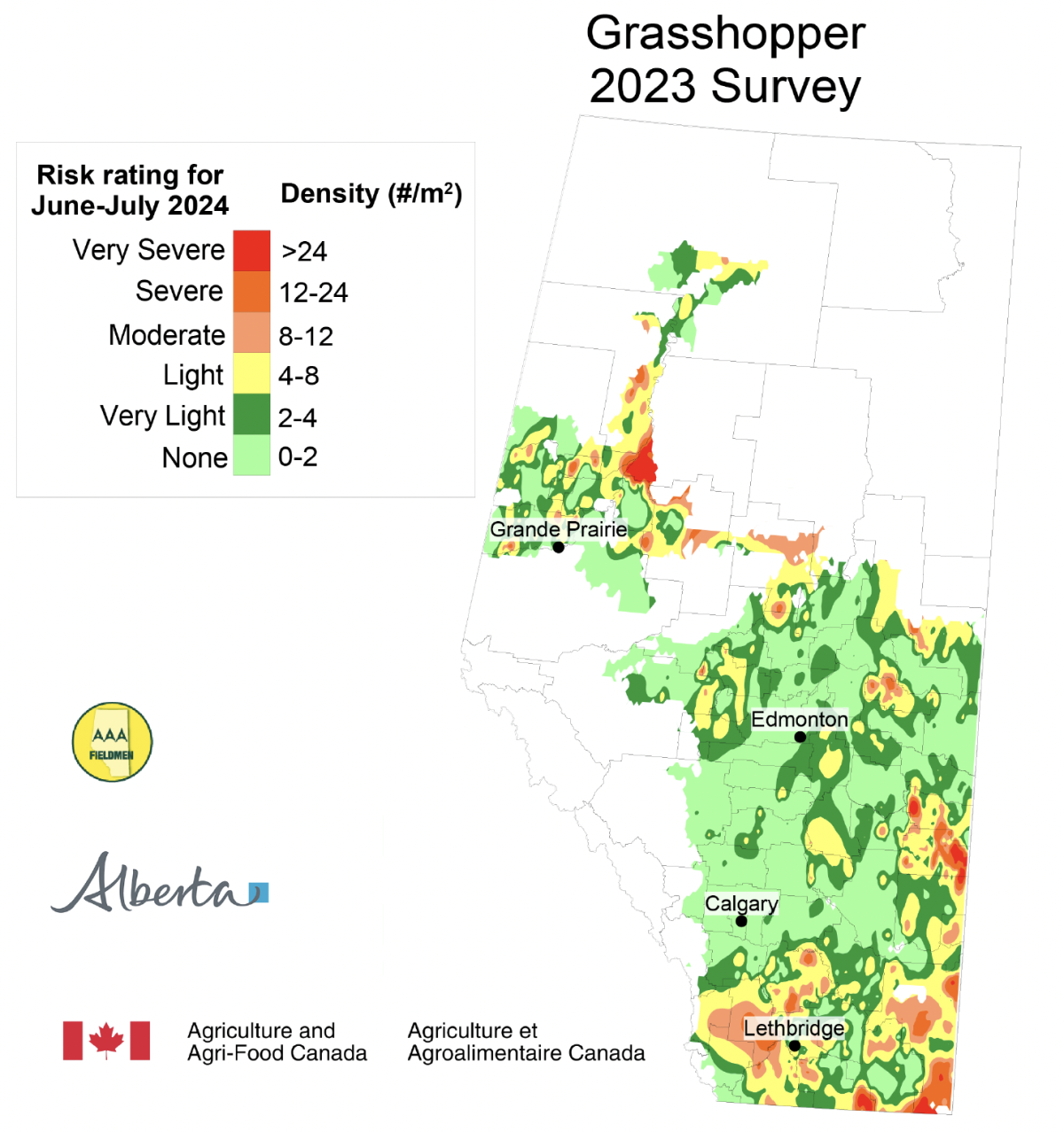
2023 was a big grasshopper year. Though we did not see a widespread outbreak, some areas experienced severe crop damage. In Saskatchewan, a surveyor caught 1788 grasshoppers in 25 sweeps, that is 71.5 grasshoppers per sweep. The extremes aside, the Prairies have seen higher grasshopper numbers over a wider area in the last few years. Heading into 2024, what are the trends looking like?
If conditions stay dry, the outlook can be concerning for 2024 in those 2023 hot spots. Due to the warm and dry spring in 2023, the grasshopper hatch and development was around 2 weeks earlier than average. Second and third instar nymphs were reported east of Medicine Hat on May 18. The first grasshopper adults were found in Stand Off area on June 18th, rather than early July in an average year. For this reason, the grasshoppers had ample time to lay eggs and the embryo development is expected to be advanced due to the warm, dry fall. Once spring conditions are favourable, when soil temperature reaches 10°C, a lot of hatching can be expected in 2024.
Scouting early and often is the key to managing grasshoppers. Start scouting in early May, as grasshopper embryos will break diapause and finish development when soil temperature is above 10°C. Closely monitor those 2023 hot spots, as well as spots with early vegetation growth, such as roadsides or ditches. Control the grasshoppers early when their population is over the threshold for your crop type and conditions.
The grasshopper species that are responsible for most of the crop losses in Alberta include:
- Two-striped grasshopper
- Migratory grasshopper
- Packard’s grasshopper
- Clear-winged grasshopper
- Bruners grasshopper
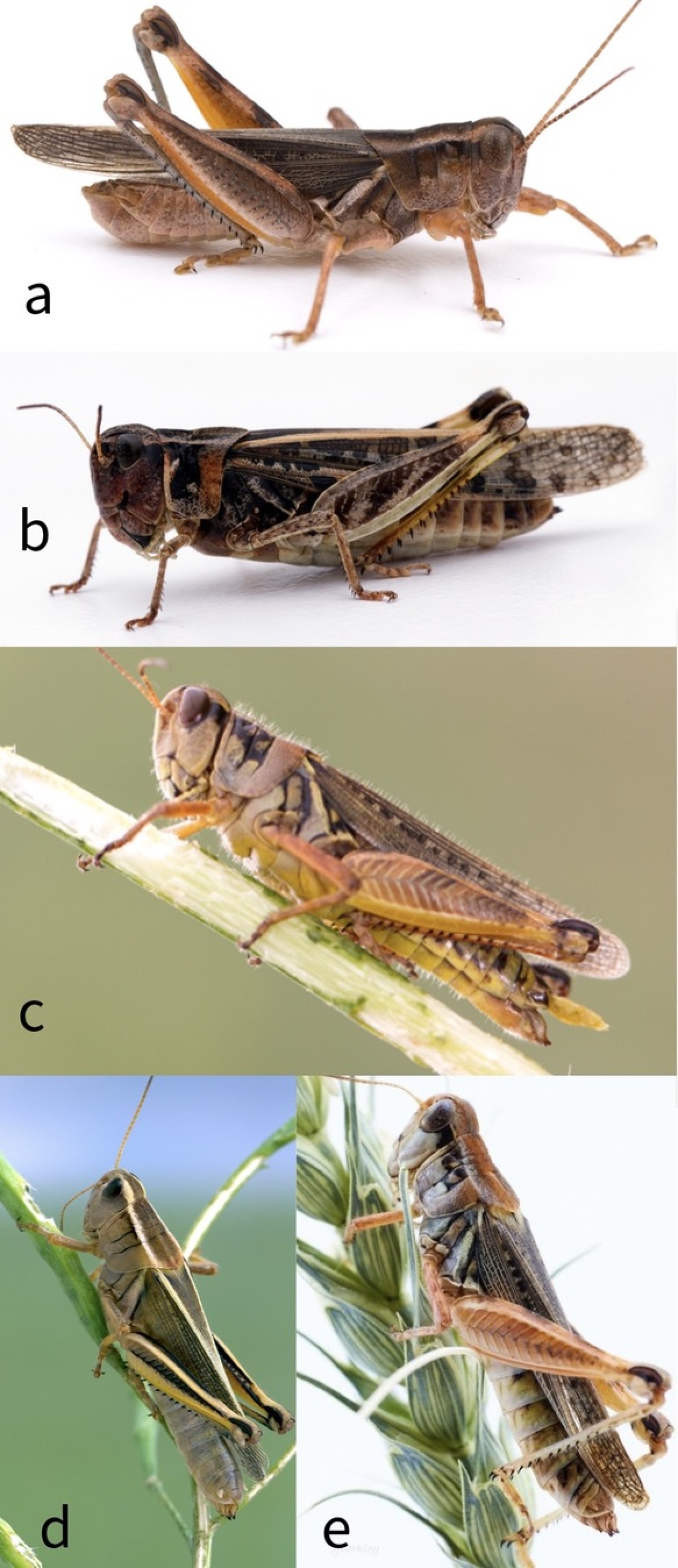
Figure 1. Common pest grasshopper species. a. Packard’s grasshopper. b. Clearwing grasshopper. c. Bruners grasshopper. d. Two-striped grasshopper. e. Migratory grasshopper. Photo credit: Shelley Barkley
For more information on grasshopper identification and management, please visit the Alberta Agriculture and Irrigation Grasshopper Overview or take a look at Western Canadian grasshopper populations and prospects slides by clicking the downloadable link below.
Wheat Stem Sawfly
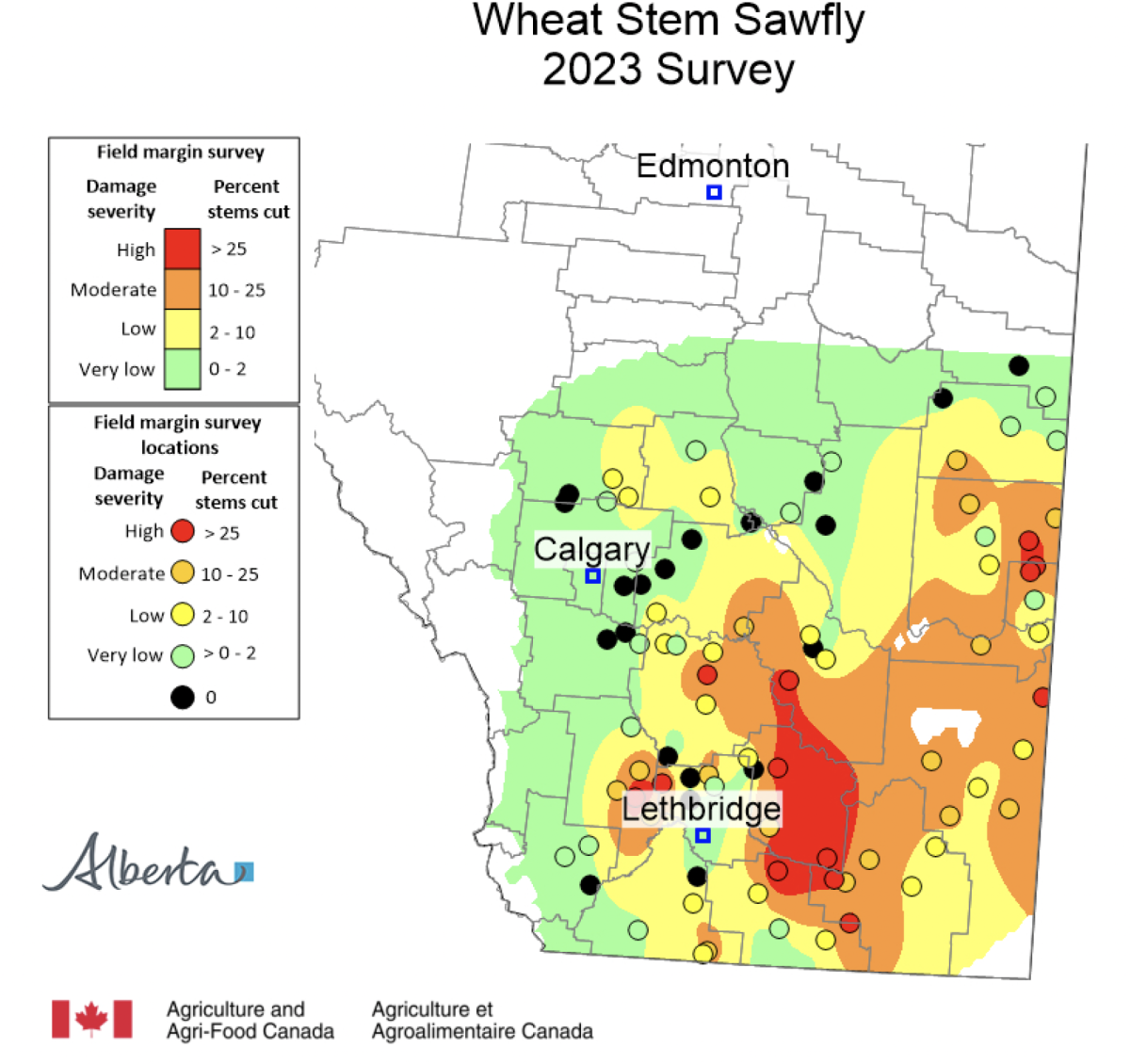
In southern Alberta, wheat stem sawfly densities have been trending up in the last few years. There is a parasitoid, Bracon cephi, that is very effective in decreasing the sawfly population over time. In years where the wheat harvest starts early due to drought, the second generation of Bracon cephi adults is largely wasted with fewer sawflies being attacked. Conversely, a cool, wet August which delays harvest allows the second generation to complete development and make an impact on the sawfly population.
If it continues to be warm and dry, wheat stem sawfly is expected to be an issue in the same areas as in 2023. If over 10-15 % cutting was observed last fall, growers are encouraged to plant a solid stem variety. Solid stem varieties can reduce cutting by up to 90%, while also reducing the survival of eggs to the following year. Examples of solid and semi-solid varieties include:
CWRS:
- CDC Adamant VB, CDC Landmard VB, CDC Hughes AB have a semi-solid stem that confers resistance to wheat stem sawfly.
- Semi-solid stem varieties express the stem solidness trait that kills sawfly larvae early in the growing season. Then, later in the season, they resorb the pith to put energy into grain formation. (https://cropwatch.unl.edu/2020/wheat-stem-sawfly-2020)
- All of them are variety blends (VB), containing 10% hollow stem varieties.
Durum
- AAC Stronghold, AAC Grainland, CDC Fortitude and AAC Weyburn VB have good solidness. They have a solid stem that confers resistance to wheat stem sawfly.
- AAC Weyburn VB contains 10% refuge that is hollow stem.
More solid stem CWRS varieties are being developed by breeders, if efforts to develop these varieties is successful, they are expected to be available to producers in the coming few years.
For more information on wheat stem sawfly management, click here.

Figure 2. Wheat stem sawfly. a. sawfly adult. b. newly emerged sawfly larva. c. overwintering sawfly larva. Photo credit: Shelley Barkley and Wendell Morrill
Wheat Midge

Wheat midge needs moisture in May and June (>22 mm rainfall) to develop into adults. For this reason, midge risk was relatively low in 2023. Higher populations were only seen in pockets where spring rain was present. However, in the areas that did not receive sufficient rain, midge can stay dormant in soil for several years.
For 2024, do not overlook the risks of midge, especially if your area has sufficient spring moisture. Refer to Prairie Pest Monitoring Network for weekly forecast maps and the Alberta Pest Monitoring Network for the wheat midge emergence trap network results. Crops are most susceptible to wheat midge when egg laying occurs from boot crack to the end of anthesis. Add midge to your scouting list when your crop is at the susceptible stage.
If planting a midge tolerant variety, please limit the use of farm-saved seed to one generation past certified. Doing so protects the only midge tolerance gene (Sm1) and keeps it effective for future.
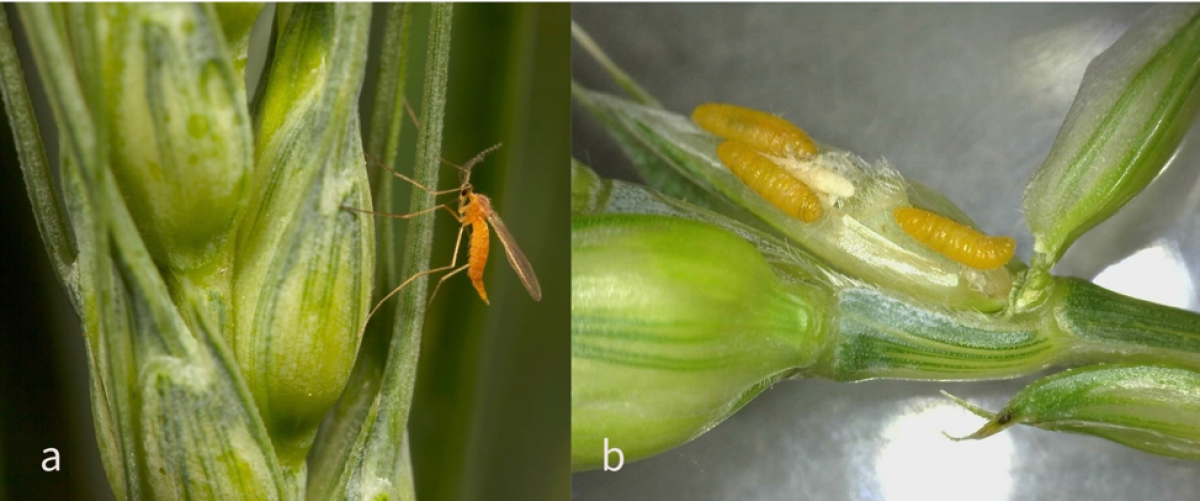
Figure 3. Wheat midge. a. midge adult. b. midge larvae feeding on developing kernels. Photo credit: Alberta Seed Guide and SaskWheat.
